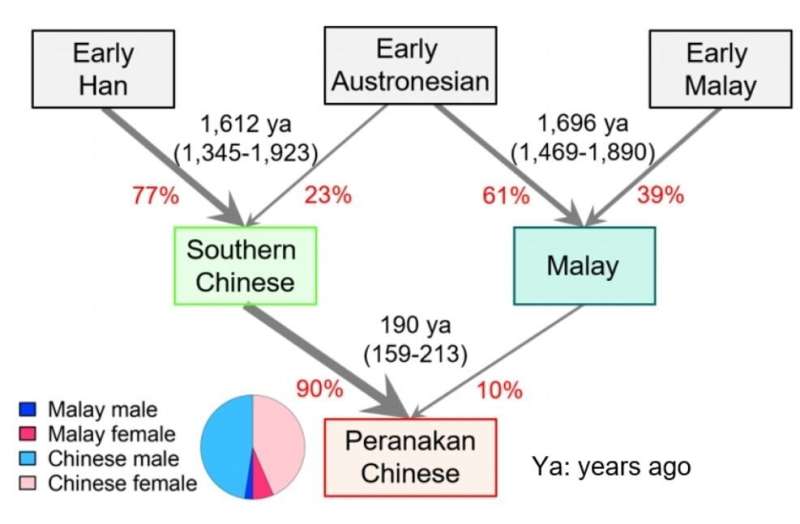Genomic analysis of Peranakan Chinese reveals insight into ancestry

A team of researchers from the Agency for Science, Technology and Research's (A*STAR) Genome Institute of Singapore (GIS) analyzed the genomes of 177 Singapore Peranakans. They estimated that Peranakan Chinese inherited 5.62% Malay ancestry around 190 years ago, a proportion that is significantly higher than that in Singapore Chinese (1.08% Malay ancestry), southern Chinese (0.86% Malay ancestry), and northern Chinese (0.25% Malay ancestry). Their findings were published in the scientific journal Molecular Biology and Evolution on 21 June 2021.
The Peranakan Chinese are culturally unique descendants of immigrants from China who settled in the Malay Archipelago centuries ago. How the genetic admixture of Peranakan Chinese occurred has long been debated and unverified, even within the community. By leveraging DNA sequences (which contain genetic footprints of our ancestors), scientists are now able to infer some aspects of the ancestors of certain populations. This approach could resolve the ambiguities in our demographic histories not covered by historical studies.
Prof Roger Foo, Senior Group Leader of the Laboratory of Molecular Epigenomics and Chromatin Organization at GIS, commented, "Genomes are like books that contain clues about our past, like the ethnicities of our ancestors. By genomic analysis, we have pieced together some clues to reconstruct the pictures of our ancestors."
The team identified an ancient admixture event shared by the Peranakan Chinese and Singapore Chinese that took place approximately 1,612 years ago, coinciding with the settlement history of Han Chinese in southern China. They also identified the recent admixture event with Malays unique to Peranakan Chinese, which took place around 190 years ago. In addition, they discovered that the Malay ancestry was primarily contributed by Malay females. These results are consistent with the hypothesis that early Chinese traders wedded local Malay women due to the smaller number of Chinese women among the early immigrants.
Baba Colin Chee, President of The Peranakan Association Singapore, said, "The Peranakan Association Singapore is proud to have collaborated with GIS on this ground-breaking genome project. Its findings have, for the very first time, given scientific credence to our belief that the Peranakans descended from the mixed unions of early traders from China, India and Europe with Southeast Asia's Malay women."
Prof Patrick Tan, Executive Director of GIS, said, "These findings greatly advance our understanding of the dispersal history of Chinese and their interaction with the indigenous populations in Southeast Asia. The information from the Peranakan genomes provides a welcome addition to our ongoing larger scale efforts to understand the genetic diversity of the Singapore population, and how genetic data can be used to improve the health of every citizen."
More information: Degang Wu et al, Genetic Admixture in the Culturally Unique Peranakan Chinese Population in Southeast Asia, Molecular Biology and Evolution (2021). DOI: 10.1093/molbev/msab187
Journal information: Molecular Biology and Evolution




















